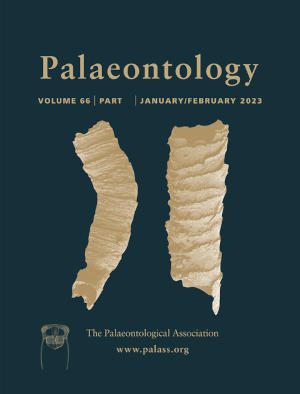Article: An efficient method for estimating vein density of Glossopteris and its application
Publication: Palaeontology
Volume:
66
Part:
1
Publication Date:
2023
Article number:
e12640
Author(s):
Mário G. F. Esperança Júnior, Gabriela B. Cybis, and Roberto Iannuzzi
Abstract
Abstract Glossopteris-type leaves are the most abundant floristic element from the Gondwanan continent and are recorded throughout the Permian, which was a period of extreme icehouse-to-hothouse climatic global change. Fossil leaf traits can be useful for the reconstruction of palaeoenvironments and identification of climatic changes throughout geological time, but the conservative morphology of Glossopteris leaves has thus far made them difficult to use for this purpose. If the characters of Glossopteris can be better quantified then it should make them useful for tracking environmental changes over a wide geographical area and over a long time interval. Venation density is a highly variable leaf trait that might be useful for this purpose. This trait can be calculated, usually as vein length per centimetre squared, but this can be a time-consuming procedure. In this paper we propose a new rapid method to estimate venation density in a conical sector of Glossopteris leaf lamina using an accurate linear model whose predictors are three linear venation densities, measured as veins per centimetre. In addition to substantially reducing the data collection time, it is less biased and more reproducible than methods applied previously with this leaf type. Using this more robust method, preliminary results significantly distinguish the venation densities of leaves produced in wet and drier ecosystems, matching a pattern similar to modern plants. This is the first survey using a large sample size to reveal that environmental stress controlled the vein architecture of Palaeozoic plants, in a manner similar to plants in modern ecosystems.
